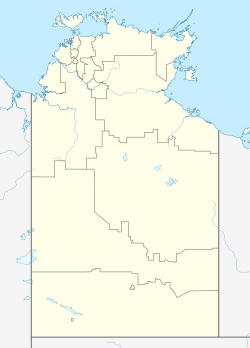Snake Bay Airport | |||||||||||
|---|---|---|---|---|---|---|---|---|---|---|---|
| Summary | |||||||||||
| Airport type | Public | ||||||||||
| Operator | Tiwi Island Regional Council | ||||||||||
| Serves | Melville Island, Australia | ||||||||||
| Location | Milikapiti, Northern Territory | ||||||||||
| Elevation AMSL | 173 ft / 53 m | ||||||||||
| Coordinates | 11°25′22″S130°39′13″E / 11.42278°S 130.65361°E | ||||||||||
| Map | |||||||||||
 | |||||||||||
| Runways | |||||||||||
| |||||||||||
Snake Bay Airport( IATA : SNB, ICAO : YSNK) is located at Milikapiti, Northern Territory on the northern coast of Melville Island, Australia.
